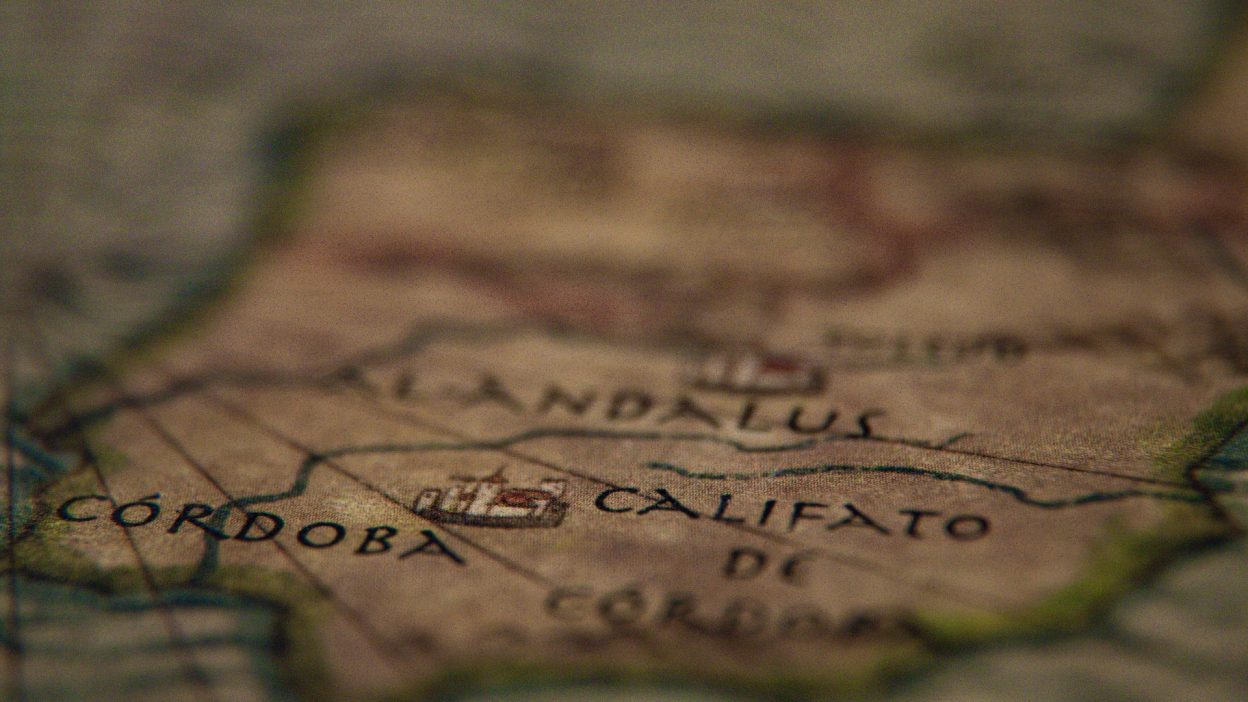The Forgotten Catastrophe That Shook the Abbasid Caliphate
1. A Cataclysmic Disaster Hidden in Time
The 856 Damghan Earthquake is one of the earliest recorded seismic disasters, yet it remains overshadowed by more recent tragedies. Striking the Abbasid Caliphate with unimaginable force, this earthquake brought devastation on a massive scale. The historical records describe it as one of the deadliest earthquakes in human history, but the details have largely faded over time.
Occurring on 22 December 856, the earthquake struck near the city of Damghan, an important centre in medieval Persia. The shockwaves were so powerful that they decimated entire settlements, collapsed grand structures, and left thousands buried beneath the rubble. This was not just a natural disaster—it was a humanitarian crisis that exposed the fragility of medieval urban planning and response systems.
2. The Abbasid Caliphate in Peril: A Seismic Test of Power
The Abbasid Caliphate, one of the most influential empires of its time, was already facing internal strife, political instability, and economic challenges. The Damghan Earthquake struck at a time when the caliphate was struggling to maintain control over its vast territories. This catastrophe deepened the crisis, severely damaging crucial trade routes and cities that contributed to the empire’s prosperity.
Damghan, a key city on the Silk Road, suffered irreversible damage. Caravans bringing wealth and goods through Persia faced destruction, disrupting commerce and sending shockwaves across the empire. The event also exposed weaknesses in urban infrastructure, as traditional building techniques could not withstand the sheer force of the earthquake. The Abbasid leadership had to deal with not only the immediate aftermath but also the long-term economic and political consequences of such a disaster.
3. Death, Destruction, and Chaos: The Brutal Statistics
- Death Toll: Reports suggest that nearly 200,000 people perished, making it one of the deadliest earthquakes in recorded history.
- Widespread Injuries: Thousands were left critically injured, with no proper medical response system in place.
- Structural Damage: Countless homes, mosques, markets, and fortresses crumbled, leaving many homeless.
- Geographical Impact: The earthquake caused massive fissures, landslides, and even shifts in water bodies, altering the region’s landscape permanently.
- Famine and Disease: The destruction of food supplies and water sources led to widespread famine and the outbreak of deadly diseases.
4. The Science Behind the Disaster: Why Was It So Devastating?
The Damghan Earthquake was caused by the collision of the Arabian and Eurasian tectonic plates, a region known for intense seismic activity. This earthquake was estimated to have a magnitude of around 7.9, making it an extremely powerful event.
The geological fault lines in this area had been under immense stress for centuries, and the sudden release of energy triggered violent shaking across hundreds of kilometres. The epicentre near Damghan meant that densely populated regions bore the full brunt of the disaster. Moreover, the soft soil and poor construction materials exacerbated the destruction, as buildings were not designed to withstand such force.
5. The Immediate Aftermath: A City in Ruins
In the wake of the earthquake, the once-thriving city of Damghan was reduced to a wasteland of debris and lifeless bodies. Survivors scrambled to find shelter among the ruins, while rescue efforts were practically non-existent due to the lack of advanced technology and coordinated response systems.
The Abbasid government was ill-prepared to deal with a crisis of this magnitude. Aid was slow to arrive, and when it did, it was insufficient to meet the desperate needs of those affected. Entire communities were abandoned, with survivors migrating to nearby cities in search of safety and resources. The social fabric of the region was shattered, with crime, violence, and lawlessness taking hold in the absence of governance.
6. The Political and Economic Fallout: A Crumbling Empire
The disaster did not just claim lives—it crippled the Abbasid economy and administration. Damghan, a crucial centre for trade and military strategy, was economically devastated.
Merchants faced huge financial losses, as trade routes were blocked by destruction. This led to inflation, scarcity of essential goods, and economic decline. The Abbasid government was forced to divert resources to reconstruction efforts, further weakening its control over far-reaching provinces. Political rivals took advantage of the chaos, leading to increased revolts and fragmentation within the empire.
7. Unprepared for the Unthinkable: What Made the Disaster Worse?
- Poor Infrastructure: The buildings were constructed with weak materials, making them highly vulnerable.
- Lack of Seismic Knowledge: No early warning systems or scientific understanding of earthquakes existed.
- Delayed Government Response: Slow rescue efforts left survivors stranded for weeks.
- Absence of Medical Support: Injured victims suffered without proper treatment, leading to higher mortality rates.
- Famine and Displacement: The earthquake disrupted agriculture and trade, pushing thousands into starvation and homelessness.
8. Could the Disaster Have Been Prevented? Missteps and Missed Warnings
In the 9th century, earthquake prediction and mitigation were nonexistent, but could the sheer scale of the devastation have been reduced? Historical accounts suggest that Damghan had been affected by tremors before, yet no preventive measures were taken. The lack of structural integrity in homes and public buildings meant that when the earthquake struck, entire neighbourhoods collapsed within moments.
Additionally, the Abbasid Caliphate had vast resources, but none were allocated for infrastructure resilience. Unlike today, there were no seismic studies, early warning systems, or emergency response strategies. Had there been an awareness of geological risks, stronger building techniques—such as reinforcing walls with wooden beams—could have minimised casualties. However, in an era where natural disasters were seen as divine punishment, preventive actions were seldom considered.
9. The Lasting Impact: How the 856 Earthquake Shaped Damghan’s Fate
The Damghan Earthquake not only levelled a flourishing city but also reshaped its long-term future. Before the disaster, Damghan was a significant centre of trade and culture in the Abbasid Caliphate. However, the catastrophe led to a mass exodus, with survivors fleeing to safer areas, leaving the city’s economy crippled. Trade routes shifted elsewhere, and Damghan never fully regained its former prominence.
Additionally, the earthquake highlighted the vulnerability of Persian cities to seismic activity, yet historical records indicate that reconstruction efforts were minimal. The disaster contributed to a decline in regional influence, altering the balance of power within the Abbasid domain. Even today, remnants of the destruction can be found in Damghan, serving as a haunting reminder of one of the deadliest earthquakes in history.
10. Lessons for the Modern World: Are We Truly Prepared?
The 856 Damghan Earthquake serves as a stark warning for modern societies prone to seismic disasters. While we now have advanced technology, early warning systems, and stringent building codes, similar catastrophes continue to occur due to poor enforcement of regulations and lack of preparedness. The 2003 Bam Earthquake in Iran, which killed over 26,000 people, showed that structural weaknesses remain a major issue in earthquake-prone regions.
Governments and policymakers must take proactive steps to prevent history from repeating itself. Investing in earthquake-resistant infrastructure, educating the public on safety protocols, and implementing effective emergency response strategies are crucial. The lessons from Damghan’s tragedy should not be forgotten—because failure to learn from the past will only ensure that future disasters claim even more lives.
FAQs
1. How many people died in the Damghan Earthquake of 856?
The earthquake is estimated to have killed 200,000 people, making it one of the deadliest earthquakes in recorded history.
2. What caused the Damghan Earthquake?
The disaster was triggered by movement along the Alborz Fault Zone, a highly active seismic region in modern-day Iran.
3. How powerful was the Damghan Earthquake?
It is believed to have had a magnitude of approximately 7.9, causing widespread destruction across northeastern Persia.
4. Did Damghan ever recover from the earthquake?
Although parts of the city were rebuilt, it never fully regained its former prominence, and trade routes shifted elsewhere.
5. What lessons can we learn from the Damghan Earthquake today?
The tragedy highlights the importance of earthquake-resistant infrastructure, early warning systems, and effective disaster response plans.




